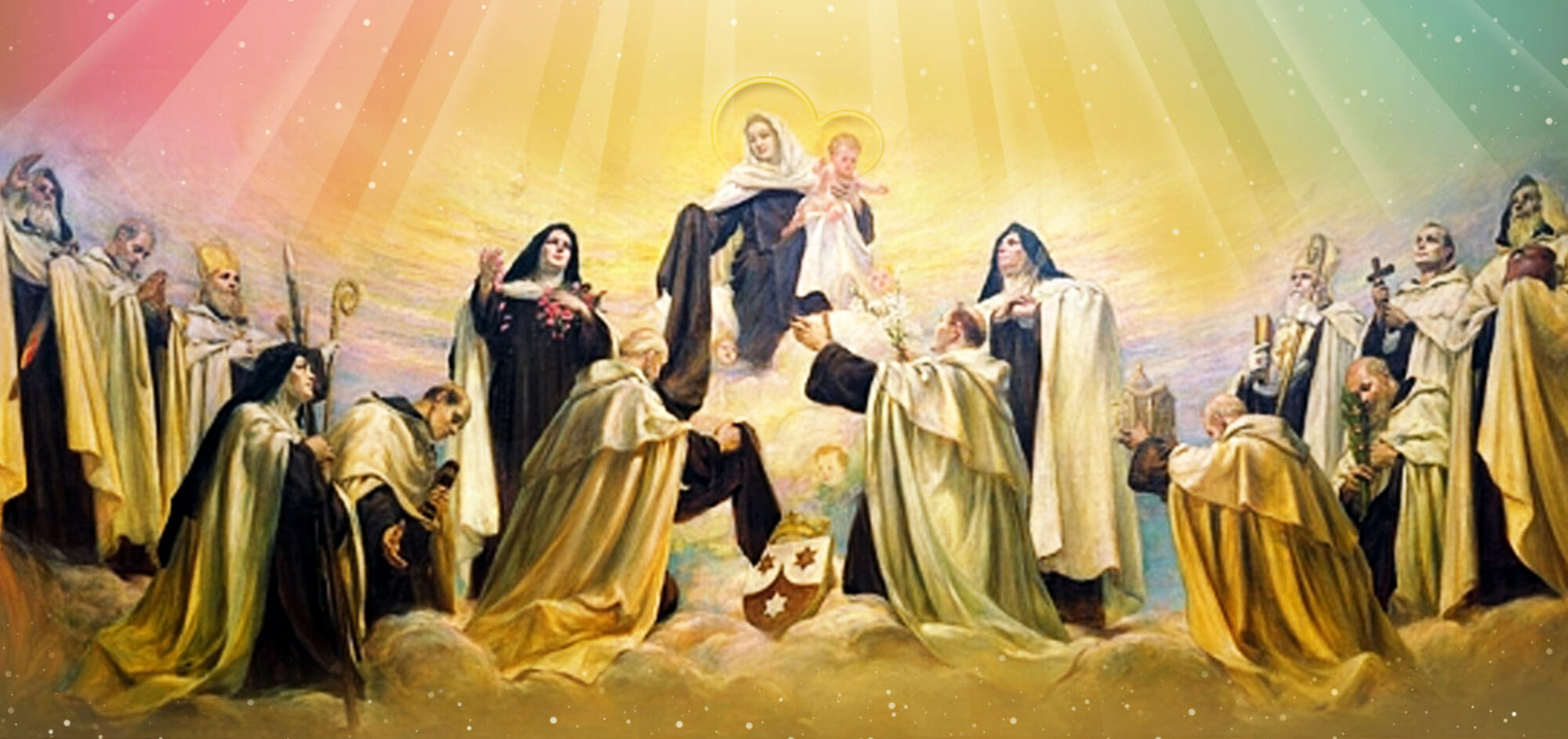(18 February 1894 – 14 March 1948) – Memorial on June 26

Giuseppina Catanea (Sr Maria Giuseppina of Jesus Crucified) was born on 18 February 1894 in Naples, Italy, into a noble family, the Marquises Grimaldi. Called “Pinella” by her family, as a young child she showed great affection for the poor and most needy, giving money to them. She helped to care for two lonely old women.
Pinella’s mother and grandmother set a good Christian example for her. She was especially devoted to Our Lord in the Eucharist and to Mary, praying the Rosary often. At an early age, Pinella was convinced that Jesus was calling her to Carmel. Having completed commercial studies, and overcoming the opposition of her mother and family members, on 10 March 1918 Giuseppina entered the Carmelite Community at St Maria of Ponti Rossi.
As a young religious, She did not enjoy good health: she was somewhat fragile and sickly; she learned to love Christ through suffering, offering herself as a victim for the good of priests. She accepted great physical pain as God’s will for her. In 1912 she began to suffer from problems of angina and later from tuberculosis. She also suffered from serious problems with the dorsal spine, suffering lesions
in the vertebrae, until succumbing to complete paralysis and meningitis of the marrow of the spine. But ten years later, on June 26, 1922, she was miraculously and instantaneously cured, after contact with the arm of St. Francis Xavier, which had been brought to Naples.

Having barely started out on her life as a Discalced Carmelite, the ‘holy nun’, as she was called, began an apostolate, which she would carry out throughout her life; she joyfully welcomed all kinds of sick and needy people in the convent, for whom she procured consolation and to whom she gave her advice, helping them to find the love of God, often carrying out wonders as well. This was an exercise in self-denial of her spirit of contemplation in order to help others, which continued on feast days and even when she was struck down with other illnesses.
In 1932, the Holy See recognized the house of ‘Ponti Rossi’ in Naples as a convent with full rights within the Order and Josephine Catanea was officially clothed with the habit of St. Teresa, taking the new name of Mary Josephine of Jesus Crucified. On August 6 of the same year, she was solemnly professed according to the Rule, which she had followed since 1918.
From 1934, she took on the position of sub-prioress, named by the Archbishop of Naples, Alessio Ascalesi; later, in 1945, she was Vicar and on September 29 of the same year, she was elected Prioress by the conventual chapter, a position which she kept until her death.
She practiced her spiritual virtues in humility, during World War II: above all loving gentleness, humility and simplicity. She prayed without ceasing, thereby nurturing her trust in God, which she transmitted to all who came as pilgrims to ‘Ponti Rossi’ to hear her words of encouragement, thereby helping them to take up their lives again with renewed hope, overcoming their trials and suffering. On the day of her clothing she had said: ‘I have offered myself to Christ Crucified so as to be crucified with Him’.
The Lord took her at her word and thus made her a participant in his suffering, which she sought living it quietly and joyfully, submerged in the heart of Mary. At a certain point in time, she began to receive extraordinary, mystical charisms, accompanied for many years by severe trials and persecutions, which she put up with by surrendering herself to God’s will. In obedience to and on the advice of Fr. Romualdo of St. Anthony, she wrote her ‘Autobiography’ (1894-1932) and ‘Diary’ (1925-1945). Letters and exhortations for religious have also been kept.
From 1943, she began to suffer from inflammation to the labyrinth of the inner ear, problems of the nervous system, very painful multiple sclerosis, progressive loss of sight and other painful disorders. Convinced that her ill state was the will of God, she received it as a gift which allowed her to approach Jesus on the cross. Finally, she entered into a critical state with spreading gangrene, offering everything to God as a sacrifice for souls.
Mother Mary Josephine died on March 14, 1948 with her heart surrendered to God and to souls. Her wasted body was kept completely incorrupt until March 27, the date of her burial, in order to make it possible for the multitudes to go to the convent to take their ‘leave’ of the ‘holy nun’. In obedience to her spiritual director, Sr Maria Giuseppina of Jesus Crucified wrote her Autobiography (1894-1932) and her Diary (1925-45), as well as many letters and exhortations for her Sisters.
In December 1948, Cardinal Ascalesi began the ordinary process for the cause of beatification. On January 3, 1987, a decree with regard to her virtues was promulgated. She was beatified in the Cathedral of Naples by Cardinal Sepe on June 1, 2008.
(compiled by Fr Regan D’Souza OCD from various sources)

